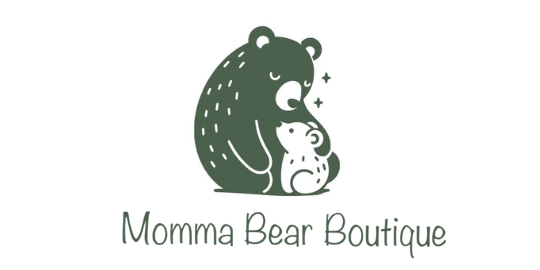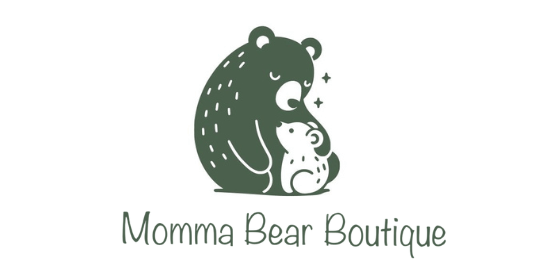Introduction
As a parent, you want the very best for your child—from nutrition to sleep to the clothes they wear every day. One choice that often goes overlooked, yet matters deeply, is what those clothes are made of.
At Momma Bear Boutique, we’re passionate about helping families make healthier, safer, and more sustainable choices. In this article, we’ll explore why organic cotton is the superior choice for baby and children’s clothing — and how it compares to conventional cotton and polyester blends.
👉 Shop our Organic Cotton Collection
What Is “Organic Cotton”?
Organic cotton is grown without synthetic pesticides, herbicides, or genetically modified seeds. Farmers use sustainable soil management, natural fertilizers, and water-efficient practices, creating a fiber that’s gentle on both skin and the planet.
Garments made with GOTS-certified organic cotton ensure that every stage — from farm to fabric — meets strict ecological and social criteria.
In contrast, conventional cotton relies on chemical fertilizers and insecticides, while polyester blends are petroleum-based synthetics that trap heat, shed microplastics, and can irritate sensitive skin.
👉 Learn more about GOTS certification and organic standards
Health & Skin Comfort Benefits
1. Gentler on Delicate Skin
Infant and child skin is thinner, more permeable, and more sensitive than adult skin. Studies show that synthetic fabrics and harsh chemical finishes can worsen skin irritation and atopic dermatitis, while natural fibers like cotton reduce irritation and moisture imbalance.
-
Organic cotton avoids formaldehyde resins, azo dyes, and pesticide residues often found in conventional fabrics.
-
Fewer chemicals = less risk of rashes, eczema, or allergic reactions.
-
Certified organic cotton is also hypoallergenic, ideal for babies with sensitive skin.
2. Better Breathability and Temperature Regulation
Organic cotton allows for superior airflow and moisture wicking, keeping babies comfortable across seasons. Unlike polyester blends that trap heat and moisture, organic cotton is naturally breathable, helping prevent overheating and skin irritation.
“Natural fibers allow better sweat evaporation and air flow, mitigating heat stress and skin irritation.” — Sustainable Materials for Children’s Wear, 2022 (ResearchGate)
🧸 Tip: Choose lightweight, woven organic fabrics for summer and brushed organic cotton for cooler months.
3. Lower Chemical & Allergen Load
Organic cotton production prohibits toxic chemicals — meaning fewer residual irritants are absorbed through children’s skin. Research suggests organic cotton fibers carry lower traces of formaldehyde, heavy metals, and insecticides than conventional alternatives.
Babies and children have a higher skin surface area-to-weight ratio, so minimizing contact with synthetic finishes and residues is a proactive way to protect long-term health.
Durability, Softness & Everyday Comfort
Organic cotton isn’t just healthy — it’s also practical.
-
Durable: High-quality organic cotton retains strength and color through repeated washing.
-
Soft & Comfortable: Because organic fibers aren’t chemically stripped, they remain naturally soft.
-
Breathable: Keeps kids comfortable in warm or cool environments.
Studies comparing organic cotton twill and recycled polyester found both held strong physical properties, but organic cotton maintained comfort and skin compatibility without microplastic shedding.
💚 Related products:
Environmental & Ethical Benefits
1. Reduced Chemical Use & Water Conservation
Conventional cotton is known as one of the world’s most pesticide-intensive crops. Organic cotton eliminates synthetic fertilizers and uses up to 91% less water through sustainable irrigation and soil retention methods.
-
Healthier ecosystems and biodiversity
-
Cleaner waterways and reduced runoff
-
Lower carbon emissions
📘 Source: Environmental Research Journal, 2023 – Organic Cotton Life-Cycle Impact Assessment
2. No Microplastics or Synthetic Pollution
Polyester clothing sheds microplastics with every wash, contributing to ocean and soil contamination. Organic cotton, being 100% natural, is biodegradable and microplastic-free — making it the cleaner, safer choice for both your child and the environment.
“Synthetic fibers from children’s clothing are a significant contributor to microplastic pollution.” — The Guardian, 2025
3. Ethical Farming & Fair Labor
Certifications like GOTS and Fair Trade guarantee humane working conditions and fair wages throughout the supply chain. By choosing organic cotton, you’re not only protecting your child — you’re supporting a more ethical global fashion system.
👉 Explore Momma Bear’s Hope & Henry Collection
How to Identify True Organic Cotton
Here’s a quick checklist parents can use when shopping:
| ✅ Criteria | What to Look For |
|---|---|
| Certification | GOTS, OEKO-TEX®, or USDA Organic |
| Fiber content | ≥95% organic cotton |
| Dyes & finishes | Low-impact or plant-based dyes |
| Transparency | Brands that disclose their farms and mills |
| Durability | Reinforced seams, soft yet strong fabric |
| Care tips | Wash cold, air dry, mild detergent |
💡 Pro tip: Look for the GOTS label on every tag — it’s your assurance that the entire process, from seed to seam, is certified organic.
Conclusion: The Softer, Safer, Smarter Choice
Organic cotton baby clothing isn’t just a fashion trend — it’s a conscious decision rooted in health, sustainability, and love.
When you choose organic cotton, you’re choosing:
-
Fewer chemicals against your baby’s skin
-
Natural comfort and breathability
-
A cleaner planet and fairer supply chain





